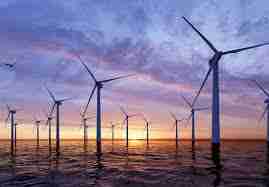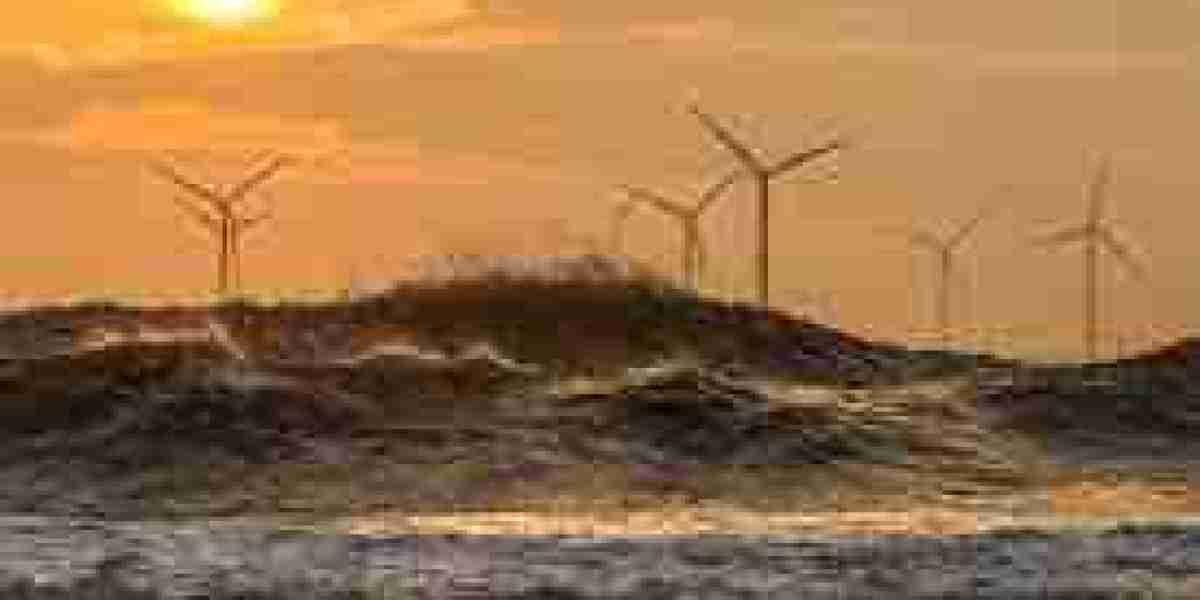The offshore wind energy market is experiencing rapid growth as governments, businesses, and organizations around the world intensify their efforts to combat climate change. Offshore wind energy, which utilizes turbines placed in bodies of water to harness wind power, is becoming an increasingly viable source of renewable energy. The sector's growth can be attributed to advancements in technology, favorable policy environments, and increasing investments aimed at reducing reliance on fossil fuels. This article analyzes the current state of the offshore wind energy market, examining its drivers, challenges, and future prospects.

Current Market Overview
The offshore wind energy market has witnessed significant growth over the past decade. Europe has long been a leader in the industry, with countries like the United Kingdom, Germany, and Denmark pioneering large-scale offshore wind farms. In recent years, the market has expanded globally, with Asia-Pacific and North America emerging as key regions for offshore wind development.
As of 2024, offshore wind farms around the world are capable of generating several gigawatts of power. According to recent reports, global offshore wind capacity reached over 50 GW by the end of 2023, with many countries setting ambitious targets for the next few decades. For instance, the European Union aims to reach 300 GW of offshore wind capacity by 2050, while China, which is rapidly expanding its offshore wind sector, plans to reach 100 GW by 2030.
Key Market Drivers
Renewable Energy Transition
One of the primary drivers of the offshore wind energy market is the global push toward renewable energy sources. Governments worldwide are setting targets to reduce carbon emissions and transition away from fossil fuels to achieve net-zero goals by mid-century. Offshore wind energy is seen as a crucial element in this transition due to its high energy yield and minimal environmental impact compared to traditional energy sources.
Technological Advancements
Over the past few years, there have been significant technological advancements in offshore wind turbines. The design of turbines has evolved to increase efficiency and power output, particularly in offshore locations with strong and consistent winds. Modern offshore wind turbines can produce up to 15 MW per unit, a vast improvement over earlier models that were capable of generating less than 5 MW. Furthermore, innovations in materials and design are reducing the overall cost of production, making offshore wind energy more economically viable.
Government Incentives and Policies
Governments are providing substantial support to the offshore wind energy sector through policies, subsidies, and incentives. In Europe, the EU has set clear goals for renewable energy, with offshore wind at the forefront. In the United States, the Biden administration has pledged to accelerate offshore wind development, with projects along the East Coast and other areas gaining momentum. These government-led initiatives are expected to drive continued growth in the offshore wind sector.
Cost Reduction and Economic Viability
Historically, the cost of offshore wind energy has been high, but in recent years, technological innovations, economies of scale, and competitive bidding processes have led to a significant reduction in the levelized cost of energy (LCOE). Offshore wind energy is now cost-competitive with traditional energy sources, including fossil fuels. The decreasing costs are expected to make offshore wind energy more attractive to investors and help scale up the industry.
Challenges Facing the Offshore Wind Market
While the offshore wind energy market has experienced substantial growth, several challenges remain that could affect its future development.
High Initial Investment Costs
Although the cost of generating offshore wind energy has decreased, the upfront capital investment required for offshore wind farms remains significant. The installation of offshore turbines involves high costs for infrastructure, including specialized vessels, subsea cables, and foundations. These high initial investments can be a barrier for many companies, especially in emerging markets.
Supply Chain Constraints
The offshore wind industry is reliant on a complex supply chain that includes components such as turbines, blades, generators, and cables. Shortages or delays in the supply chain can affect the timely completion of offshore wind projects. The demand for offshore wind energy is expected to rise significantly, putting pressure on manufacturers to ramp up production and ensure the availability of components.
Environmental and Regulatory Concerns
Although offshore wind energy is considered environmentally friendly, its development can still raise concerns related to marine life and ecosystems. Construction and operation of offshore wind farms could potentially disrupt local marine life, fisheries, and shipping lanes. Regulatory hurdles, including environmental assessments and permitting processes, can delay projects and increase costs. Furthermore, public opposition from local communities and industries such as fishing can also pose challenges.
Grid Integration
Offshore wind farms are typically located far from land, which can complicate their integration into national or regional power grids. Transmitting energy from offshore locations to onshore grids requires advanced and costly infrastructure, including subsea cables. Developing efficient grid systems to accommodate offshore wind energy will be critical to ensuring its reliability and consistency.
Future Outlook
Despite the challenges, the offshore wind energy market has a bright future, supported by a strong global push for decarbonization, technological advancements, and increased investments. Several trends are expected to shape the industry over the coming years.
Floating Wind Technology
One of the most promising developments in offshore wind is the growth of floating wind technology. Floating wind turbines, which are anchored to the seabed via floating platforms, allow turbines to be installed in deeper waters where traditional fixed-bottom turbines cannot be used. This technology could vastly expand the areas available for offshore wind development and open up new opportunities in regions with deep waters, such as the U.S. West Coast and parts of Asia.
Global Expansion and Market Diversification
The offshore wind market is poised to expand beyond traditional strongholds in Europe. As countries like the U.S., China, South Korea, and Japan invest heavily in offshore wind, the global market will become more diverse. New markets will emerge, and competition will increase, driving further technological advancements and cost reductions.
Hybrid Projects and Energy Storage
In the future, offshore wind farms could be integrated with other renewable energy sources, such as solar power, to create hybrid projects that provide a more consistent and reliable energy supply. Additionally, energy storage technologies such as batteries will play an important role in stabilizing the power output of offshore wind farms, addressing the intermittency of wind energy.
Offshore Wind in Emerging Markets
Emerging markets, particularly in Asia, Africa, and the Middle East, offer significant growth opportunities for offshore wind energy. Countries with vast coastlines and abundant wind resources are increasingly looking to offshore wind as a solution for their energy needs. The cost reductions and technological advancements in the offshore wind sector will make it a more accessible and viable option for these regions in the coming years.
Conclusion
The offshore wind energy market is poised for continued expansion, driven by technological advancements, favorable government policies, and a growing global demand for renewable energy. Although challenges such as high capital costs, regulatory hurdles, and supply chain constraints remain, the sector's prospects are strong. With floating wind technology on the rise and the global push for decarbonization intensifying, the offshore wind energy market is expected to play a key role in the transition to a cleaner, more sustainable energy future.




